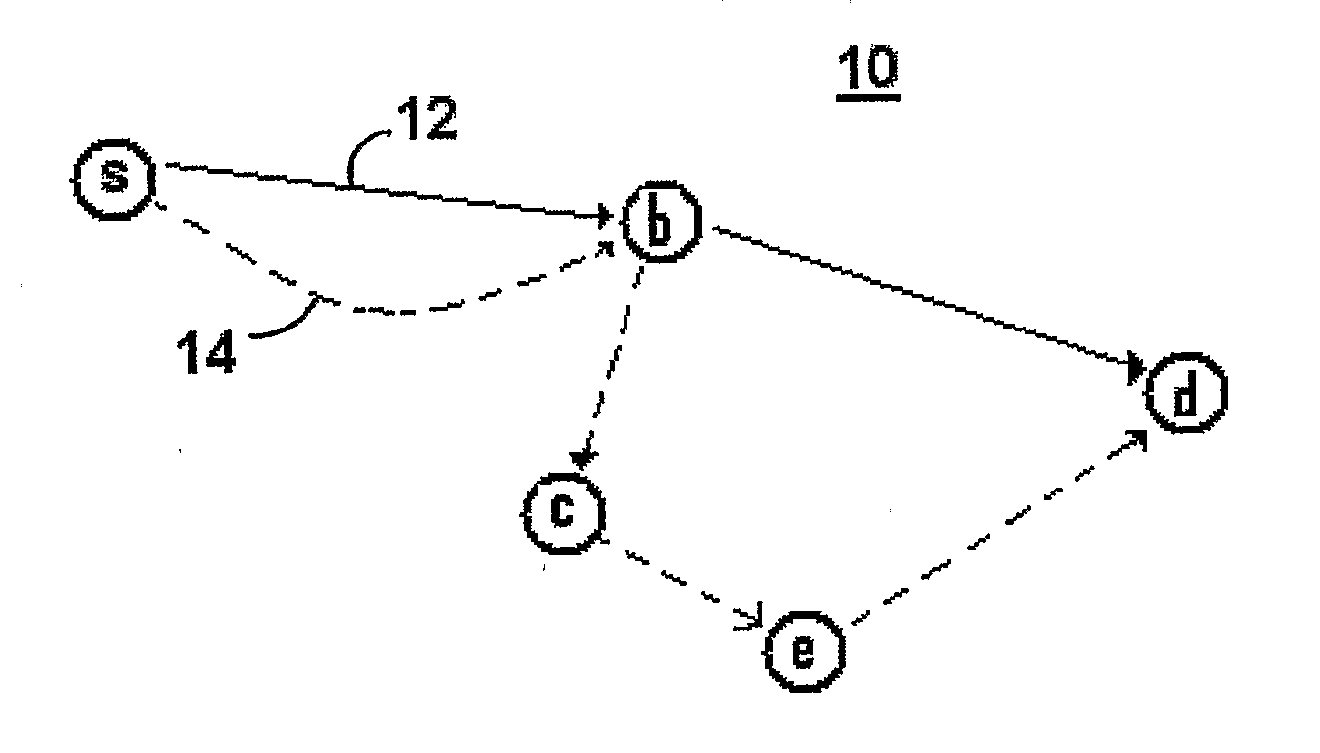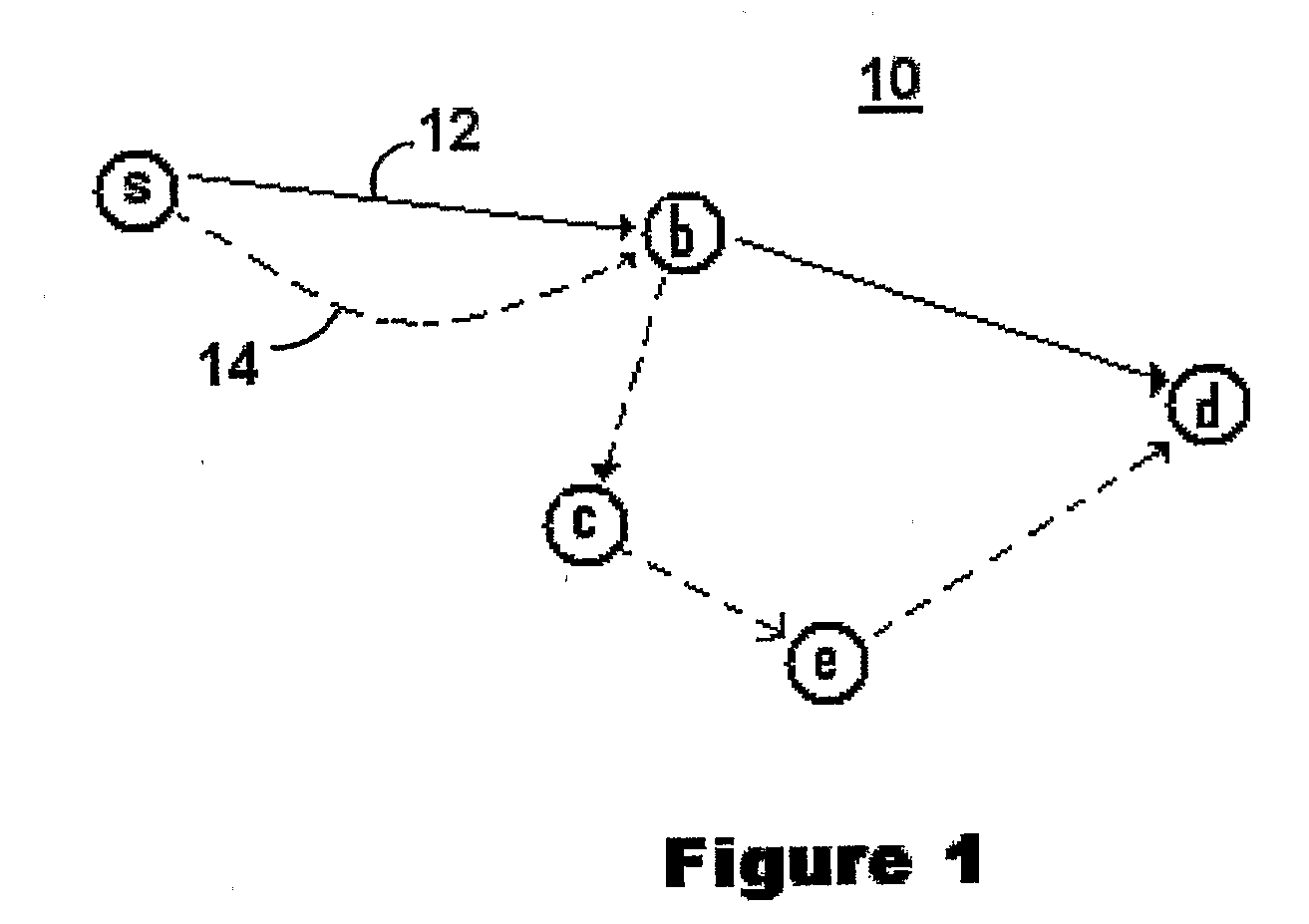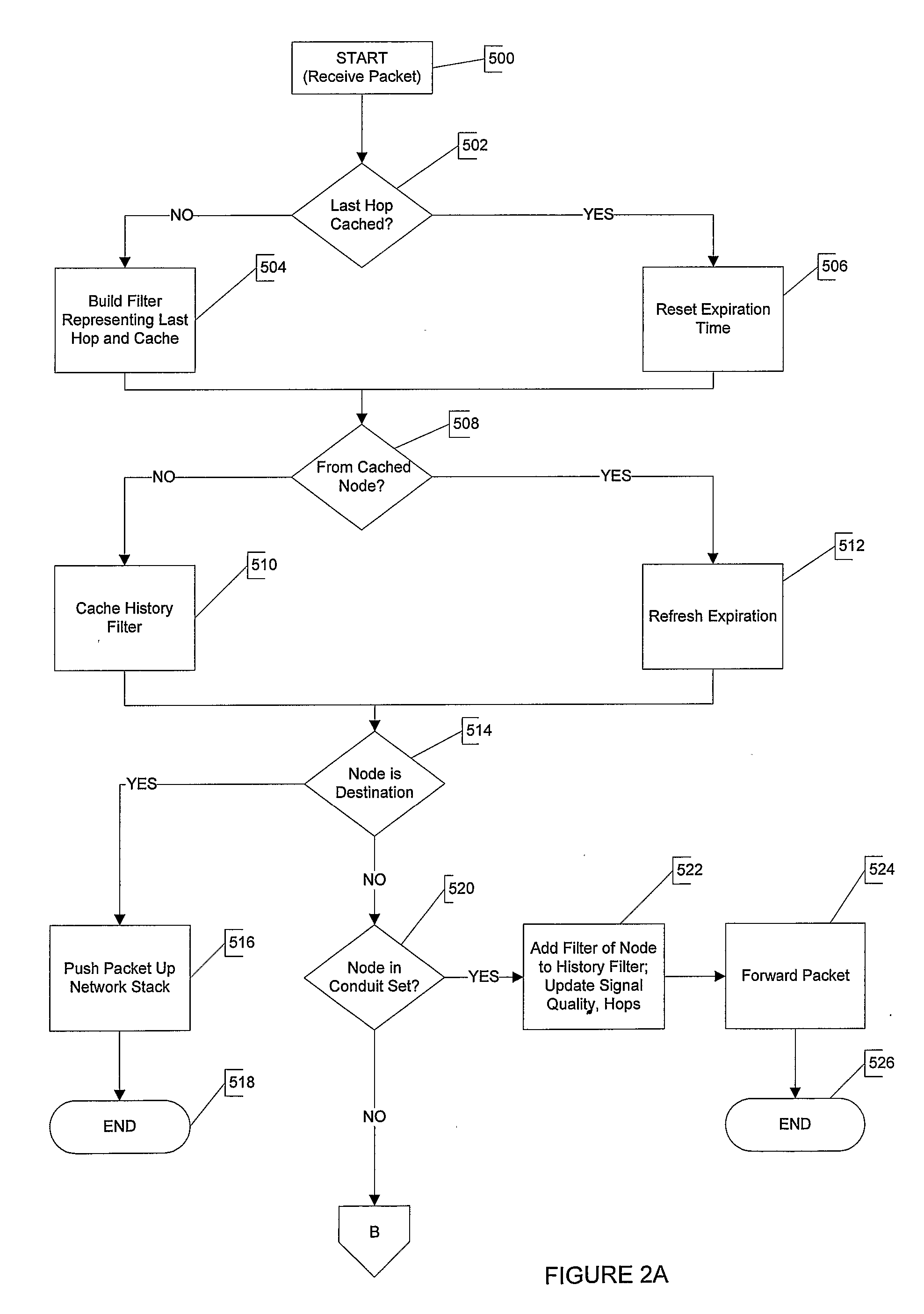Method and Apparatus for Ad Hoc Mesh Routing
a mesh routing and packet technology, applied in the field of packet radio communication systems, can solve the problems of affecting the performance of the entire network, and extending the network over a large distan
- Summary
- Abstract
- Description
- Claims
- Application Information
AI Technical Summary
Benefits of technology
Problems solved by technology
Method used
Image
Examples
Embodiment Construction
[0043] Ad-Hoc Mesh Routing (hereafter referred to as “AHMR”) refers to the algorithm used to construct scalable, robust networks topographically organized in a mesh (hereafter referred to as “mesh networks”). The method of the present invention concerns a method for constructing and maintaining stable networks from topologically variable networks in such a way that the network can operate without a coordinator or base station and each node can also serve as a router providing a high level of redundancy to improve overall network robustness. The method of the present invention algorithm can be used to construct ad-hoc networks such as wireless networks.
[0044] The method of the present invention aims to address both of these concerns by providing a level of connectivity on variable networks that is comparable to an equivalently sized topologically invariant network while imposing minimal overhead. As a result of focusing on minimal overhead, the performance of ad-hoc networks constru...
PUM
 Login to View More
Login to View More Abstract
Description
Claims
Application Information
 Login to View More
Login to View More - R&D
- Intellectual Property
- Life Sciences
- Materials
- Tech Scout
- Unparalleled Data Quality
- Higher Quality Content
- 60% Fewer Hallucinations
Browse by: Latest US Patents, China's latest patents, Technical Efficacy Thesaurus, Application Domain, Technology Topic, Popular Technical Reports.
© 2025 PatSnap. All rights reserved.Legal|Privacy policy|Modern Slavery Act Transparency Statement|Sitemap|About US| Contact US: help@patsnap.com



